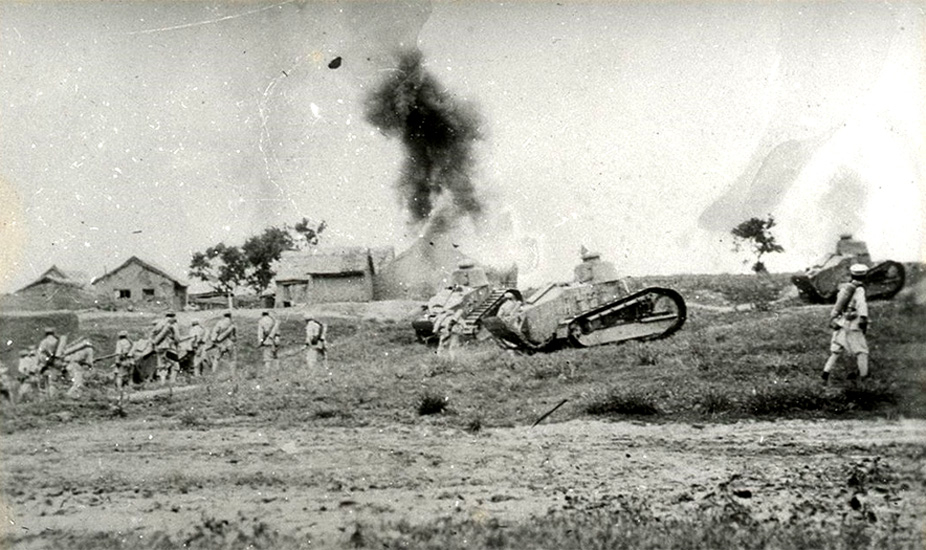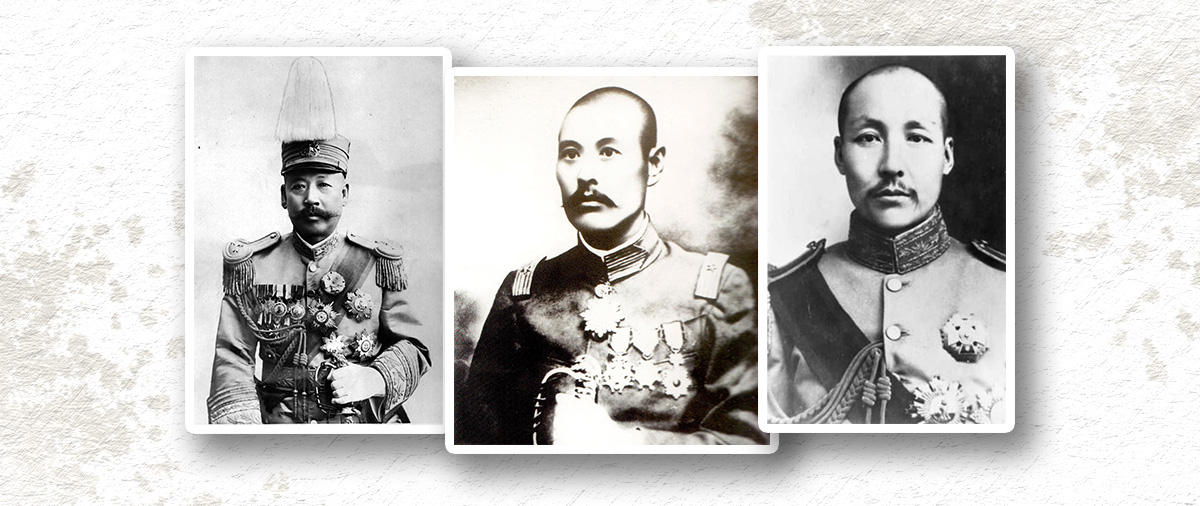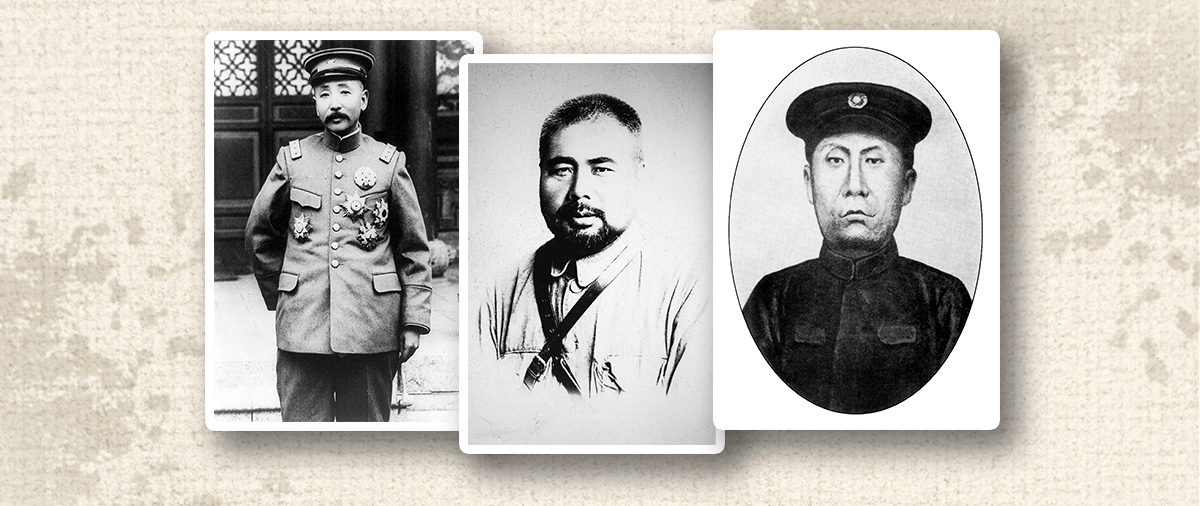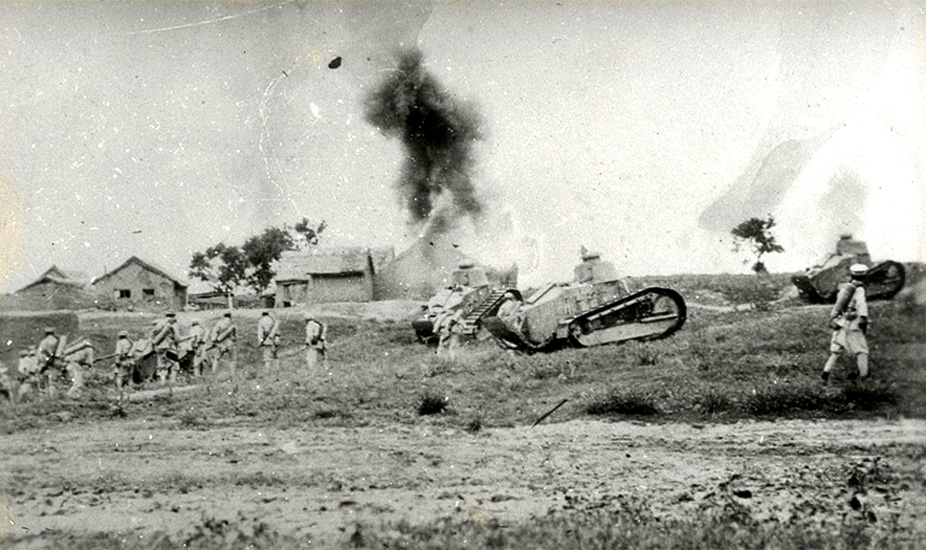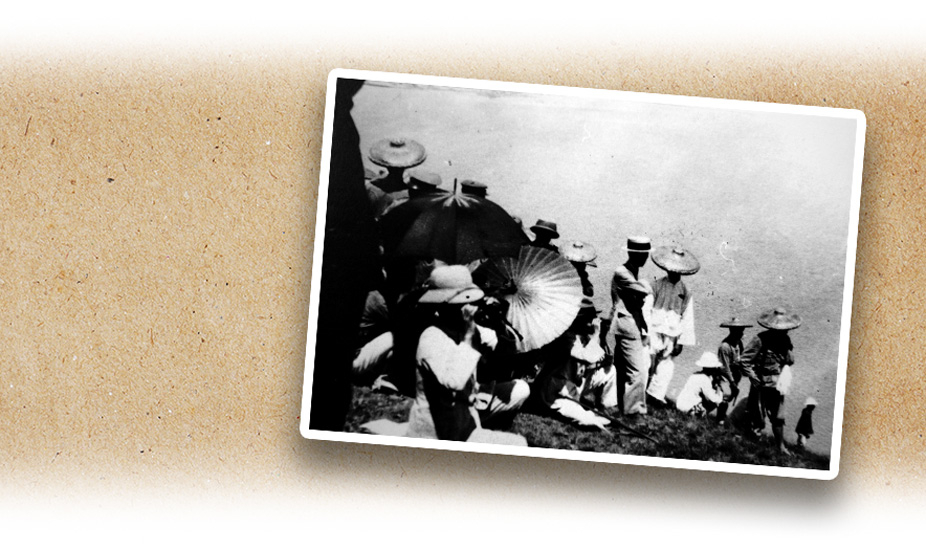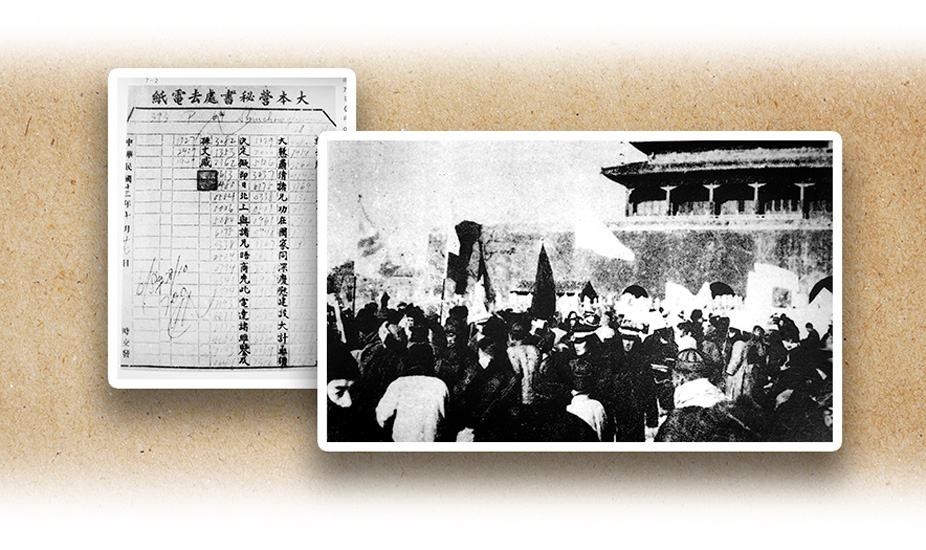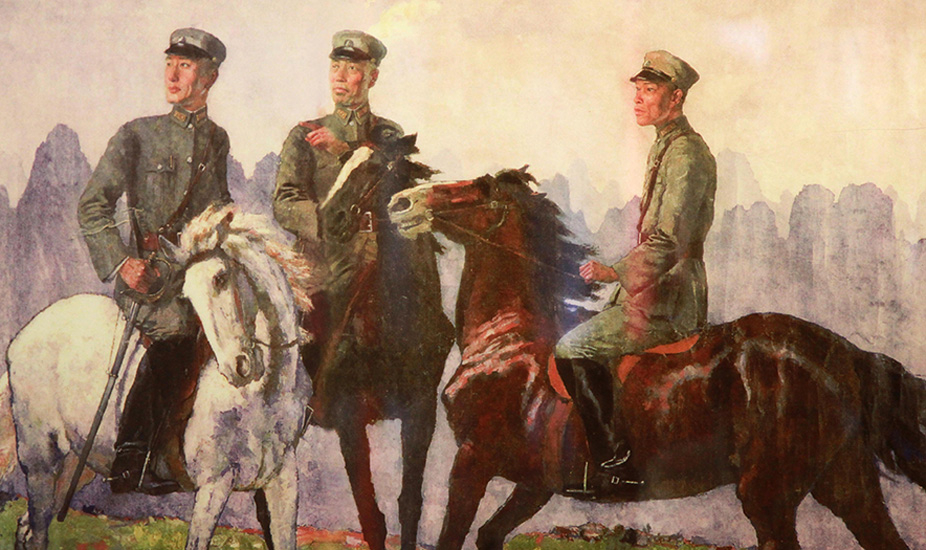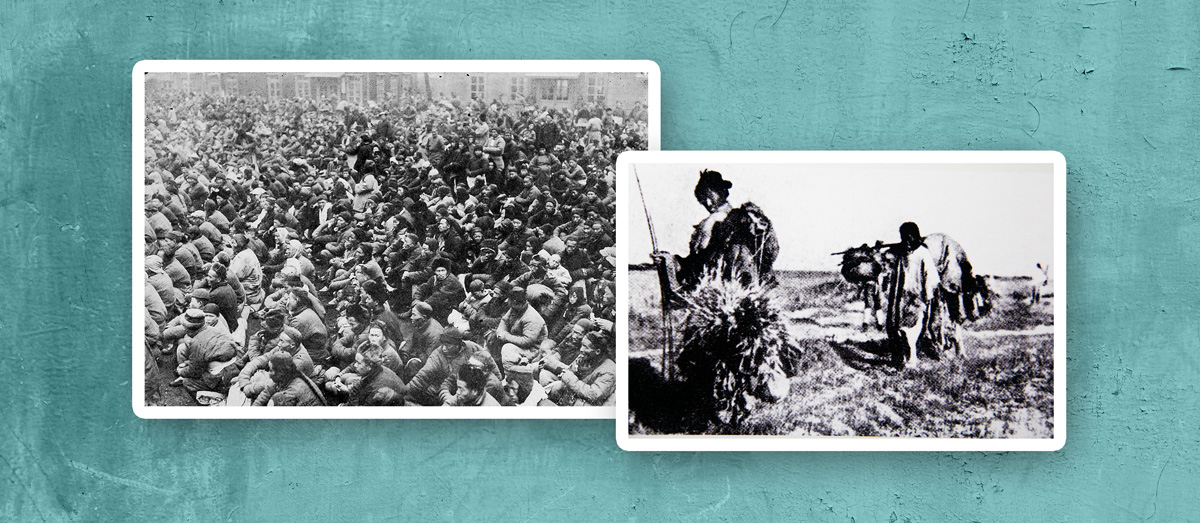The chaos in the early Republican era was marked by constant warfare among warlord cliques that controlled different parts of China. The major cliques that emerged after Yuan Shikai’s (袁世凱) death were:
(1) Anhui clique (皖﹝安徽﹞系): a splinter group of the Beiyang clique (北洋系) headed by Duan Qirui (段祺瑞);
(2) Zhili clique (直﹝直隸﹞系): a splinter group of the Beiyang clique headed first by Feng Guozhang (馮國璋) and Cao Kun (曹錕), and then mainly by Wu Peifu (吳佩孚) and Sun Chuanfang (孫傳芳);
(3) Fengtian clique (奉﹝奉天﹞系): headed by Zhang Zuolin (張作霖) and later by his son Zhang Xueliang (張學良);
(4) Shanxi clique (晉﹝山西﹞系): headed by Yan Xishan (閻錫山);
(5) Feng clique (馮系): a splinter group of the Zhili clique headed by Feng Yuxiang (馮玉祥). It controlled much of north-western China;
(6) Yunnan clique (滇﹝雲南﹞系): headed first by Tang Jiyao (唐繼堯) and then by Long Yun (龍雲);
(7) Guangxi clique (桂﹝廣西﹞系): headed by Lu Rongting (陸榮廷) and later by various leaders including Li Zongren (李宗仁), Bai Chongxi (白崇禧), Huang Shaohong (黃紹竑), and Huang Xuchu (黃旭初);
(8) Others: the Guangdong New Warlord (廣東新軍閥) headed by Chen Jiongming (陳炯明), and other regional warlord cliques in the provinces of Sichuan (四川), Guizhou (貴州), Hunan (湖南), and Xinjiang (新疆).
Warlord cliques engaged in constant warfare, particularly the splinter groups of the Beiyang clique. This caused instability to society and people’s livelihoods. Major wars included:
(1) Zhili-Anhui War: fought in Beijing (北京) and Tianjin (天津) in 1920. It ended with the Anhui clique’s defeat;
(2) Zhili-Hunan-Sichuan War: fought in 1921 and ended with the Zhili clique’s victory over the Hunan and Sichuan armies;
(3) First Zhili-Fengtian War: fought in 1922. Finding itself at a disadvantage, the Fengtian clique retreated to Manchuria;
(4) Second Zhili-Fengtian War: fought in 1924 between the Zhili clique and a coalition of the Fengtian, Anhui and miscellaneous clique and southern warlords. At a key moment in the war, the Zhili general Feng Yuxiang suddenly switched sides and supported the Fengtian clique in making Duan Qirui the acting head of the government. Sun Yat-sen (孫中山) was invited north to discuss national affairs;
(5) Third Zhili-Fengtian War: fought in 1925. Both sides scored victories over the other;
(6) Fengtian-Zhili-Feng War: fought in January 1926, the Fengtian clique and Zhili clique joined forces to defeat Feng Yuxiang’s army. Soon after the war, the National Revolutionary Army (國民革命軍) in the south launched the Northern Expedition (北伐).
|
|
What is the origin of “junfa (軍閥)”, the Chinese word for “warlord”? How are regional warlord cliques commonly named in Chinese? |
|
|
See answer below. |
Cavalry troops of the Beiyang Army. After Yuan Shikai’s death, China was consumed by chaos as the Beiyang clique and other regional warlord cliques fought each other for dominance.
The key leaders of the Zhili clique. From left to right: Cao Kun, Wu Peifu, and Sun Chuanfang. Feng Guozhang, the original leader of the Zhili clique, died in 1919. Cao obtained the post of president via bribery in 1923.
From left to right: Zhang Zuolin, the leader of the Fengtian clique that controlled Northeast China; Feng Yuxiang, a former Zhili warlord who broke with the clique to form his own in north-western China; and Yan Xishan, the leader of the Shanxi clique based in Shanxi Province.
Pictured on the left and in the centre are portraits of Jin Yunpeng (靳雲鵬) and Lu Yongxiang (盧永祥) respectively. Both were notable warlords of the Anhui clique. The leader of the Anhui clique was Duan Qirui. Pictured on the right is a telegram jointly sent by the Zhili and Fengtian cliques declaring war on the Anhui clique. The 1920s was also known as China’s warlord era for the chaotic armed conflicts among warlords. The first large-scale war in the era was the Zhili-Anhui War. It ended with the Zhili clique’s victory.
Among the wars waged, those between the Zhili and Fengtian cliques were the most violent. Pictured are tanks deployed by the Fengtian clique.
Shanhai Pass (山海關) was a strategic location in the 1920s. During the warlord era, many fierce battles were waged between the Zhili and Fengtian forces at Shanhai Pass.
Binoculars in hand, Sun Yat-sen (bottom left corner of the picture) inspected his troops during a campaign against the Guangxi clique warlord Shen Hongying (沈鴻英) in May 1923. Some of the southern warlords supported Sun. However, most of them were just using Sun’s reputation to enhance their own strength. They did not support the revolution sincerely.
The Guangdong warlord Chen Jiongming, once a supporter of Sun Yat-sen, broke with Sun in 1922 and even shelled him. Sun was forced to take refuge on a warship. Shen Hongying once supported Sun as well. However, Shen turned on Sun in 1923 and attacked Guangzhou, where Sun’s base was located. Shen, defeated by the regional warlords Sun relied on, retreated to Guangxi afterwards.
During the Second Zhili-Fengtian War in 1924, Feng Yuxiang of the Zhili clique suddenly switched sides and overthrew the President Cao Kun by what is now called the Beijing Coup (北京政變). This led to the Zhili clique’s decisive defeat. After the battle, Feng and Zhang Zuolin of the Fengtian clique jointly supported Duan Qirui as the acting head of state, and telegrammed an invitation to Sun Yat-sen to come to the north for national affairs discussion. On the left: Sun’s acceptance of the invitation by telegram; on the right: on December 31, Sun was welcomed by tens of thousands of people as he passed by Tian’anmen upon his arrival in Beijing from Tianjin (天津).
An oil painting titled Three Heroes of Guangxi (《廣西三傑》) by the renowned modern Chinese artist Xu Beihong (徐悲鴻). It was painted during his tenure as the dean of the Guangxi Provincial College of Art (桂林美術學院). The figures from left to right are Bai Chongxi, Li Zongren, and Huang Xuchu. Among the warlords, some were more visionary and held revolutionary ideologies. Bai Chongxi, Li Zongren, Huang Xuchu and Huang Shaohong in the “New Guangxi clique (新桂系)” were the outstanding ones.
The New Guangxi clique was a group of newly emerged warlords based in Guangxi. Compared to the “Old Guangxi clique” warlords like Lu Rongting and Shen Hongying, those in the new clique were more progressive-minded and capable. These new warlords, particularly Bai Chongxi and Li Zongren, would go on to play a prominent role in the military and political circles of the Republican era.
Refugees during the warlord era (left) and peasants constantly on the run from military conflicts (right). Years of warlord melee caused social turmoil and hardship to people’s livelihood. The public was desperate to see the end of the warlord era.
|
|
What is the origin of “junfa (軍閥)” , the Chinese word for “warlord”? How are regional warlord cliques commonly named in Chinese? |
|
|
While some believe that the term “junfa” was a modern translation of the Japanese term gunbatsu (meaning military clique), yet it’s not accurate. Junfa refers to high-ranking and powerful generals who have their own armies and power bases. In ancient China, terms such as “qunxiong (群雄)”, meaning those who rise to power in chaotic times, and “fanzhen (藩鎮)”, meaning frontier defence commands, are similar in meaning. The term junfa is formed by pairing the Chinese word “jun (軍)”, meaning military with the word “fa (閥)” derived from the Chinese term “menfa (門閥)”, meaning influential and eminent clans. Similar terms that evolved from menfa include caifa (business conglomerates, 財閥) and xuefa (education institutions whose graduates dominate certain professions, 學閥). Junfa is by no means a new term either: as early as the Tang dynasty (唐代), the term first appeared in the Book of Tang: Biography of Guo Qianguan (《唐書‧郭虔瓘傳》) and was used in the context of frontier defence towns. Thus, the use of “junfa” in the modern era was not completely derived from the Japanese vocabulary. The regional warlord cliques in the early Republican era were named after the abbreviation of the provinces where the clique leaders first assumed power. For example, the Anhui clique was “Wanxi (皖系)” in Chinese with “Wan (皖)” being the abbreviation for Anhui and “xi (系)” meaning clique. Similarly, the abbreviated province names used in the naming of the other regional cliques are Zhi (直, for Zhili, or modern-day Hebei﹝河北﹞), Feng (奉, for Fengtian, or modern-day Liaoning ﹝遼寧﹞and Northeast China); Jin (晉, for Shanxi), Dian (滇, for Yunnan) and Gui (桂, for Guangxi). |
Sources of most photos used in this feature piece: Fotoe and misc. photo sources.




